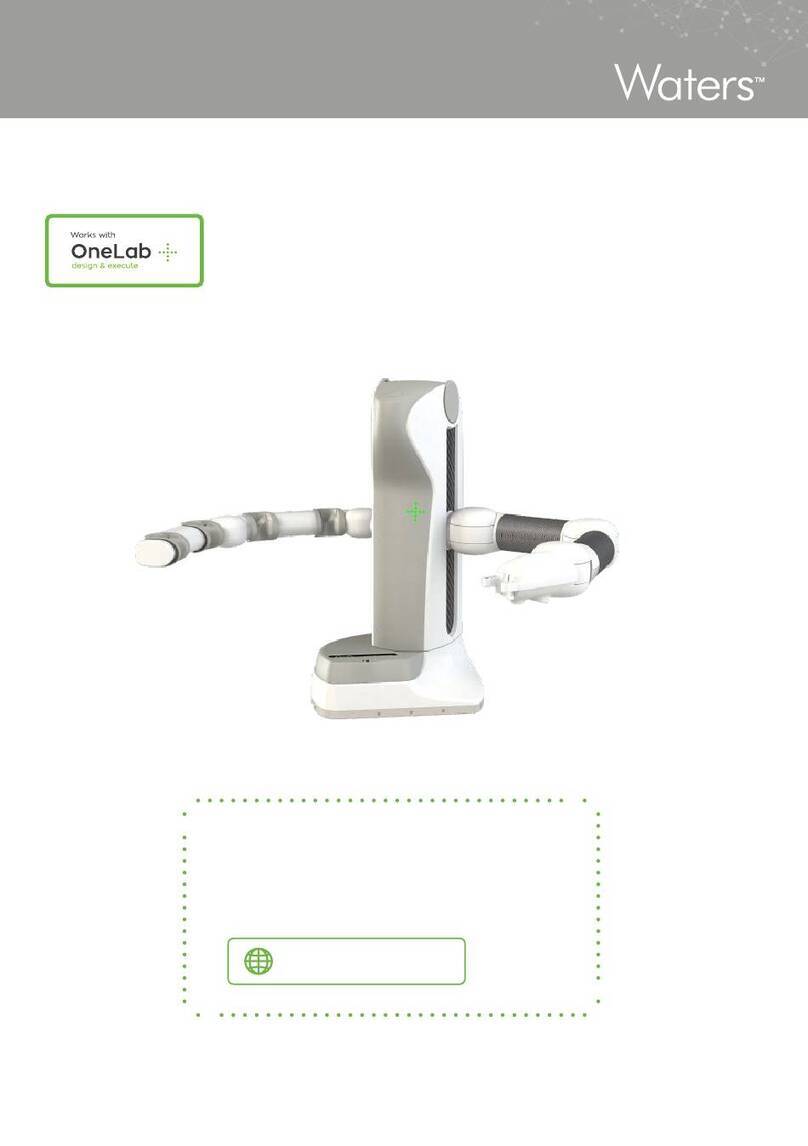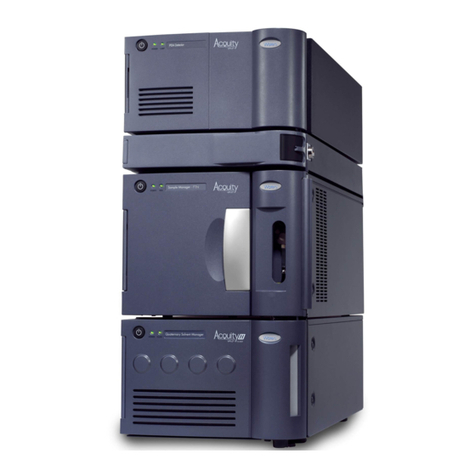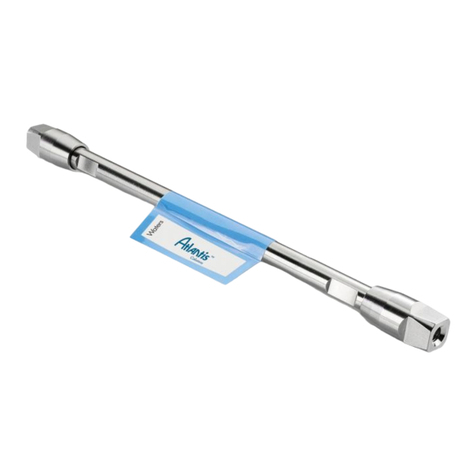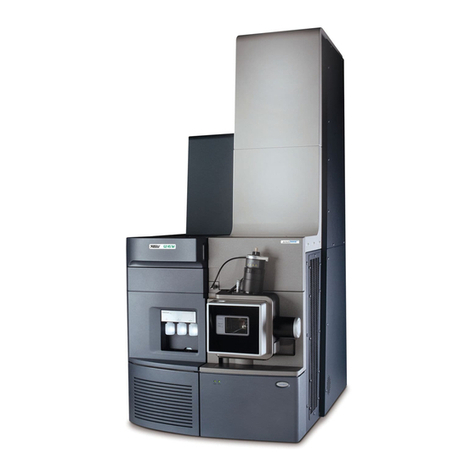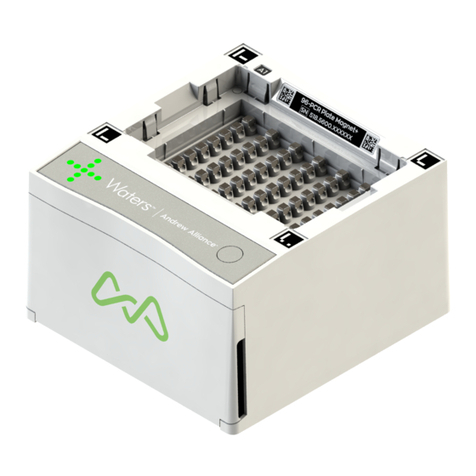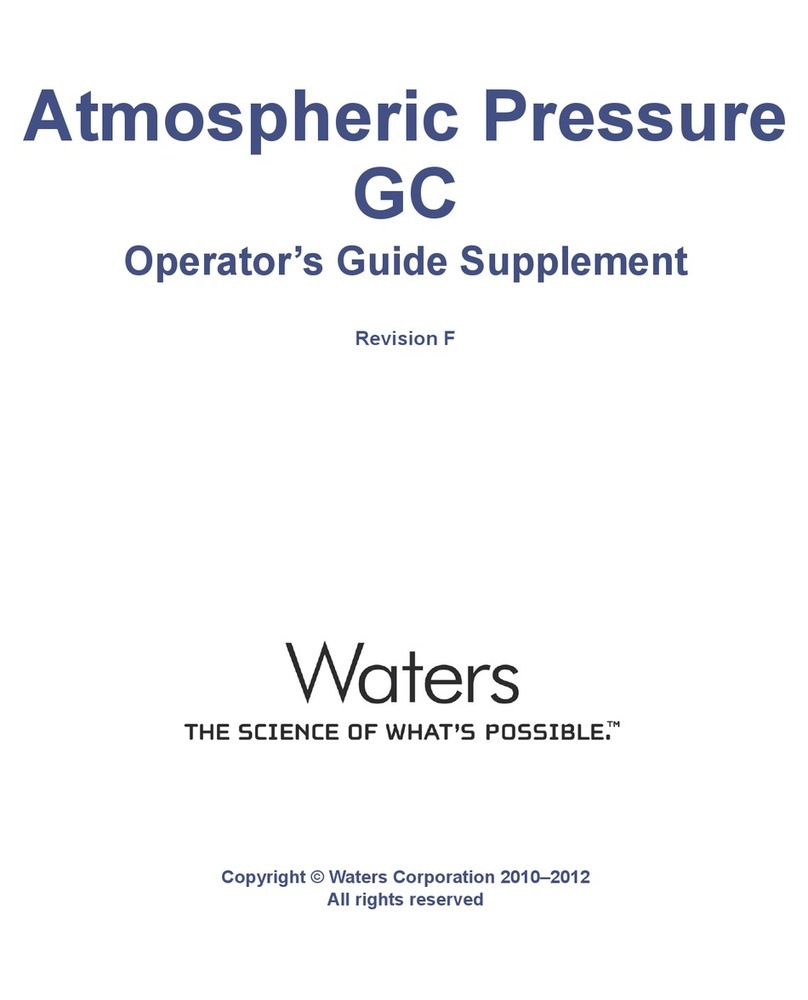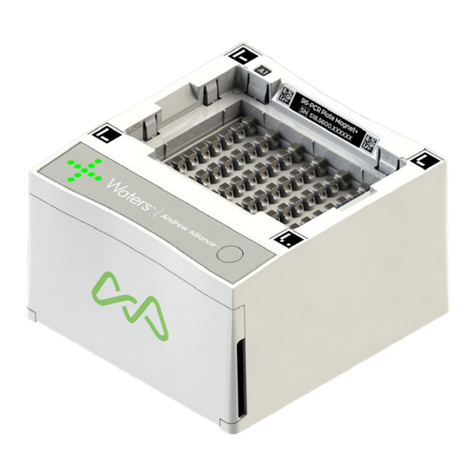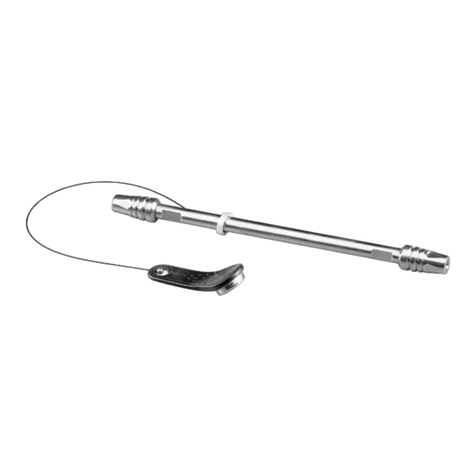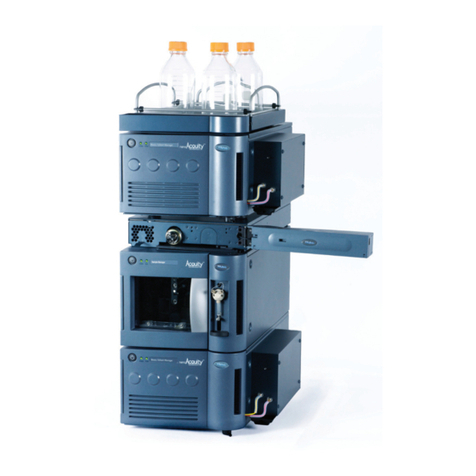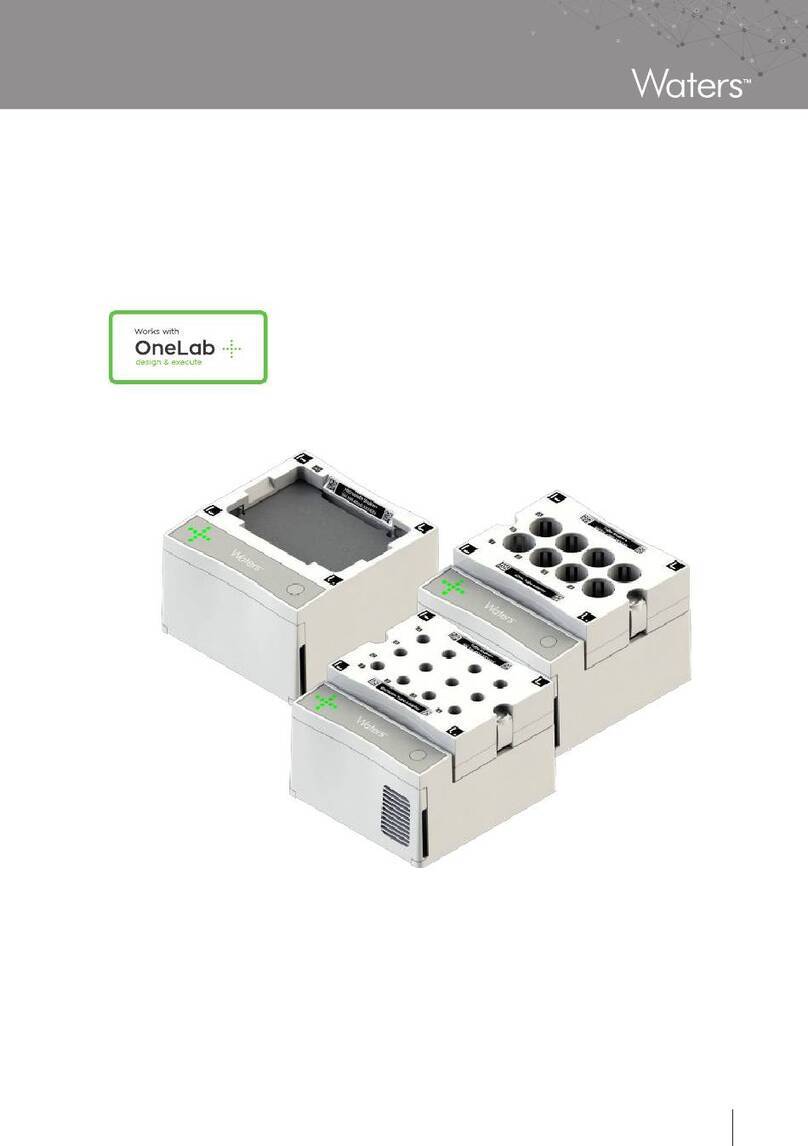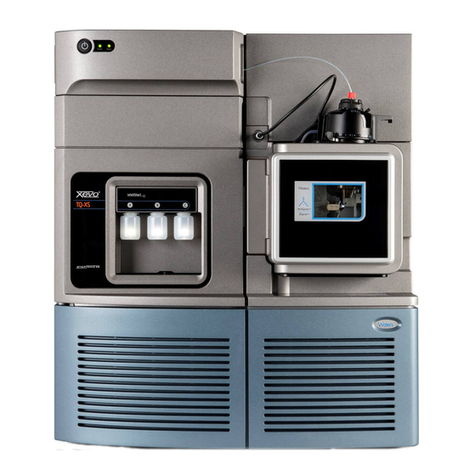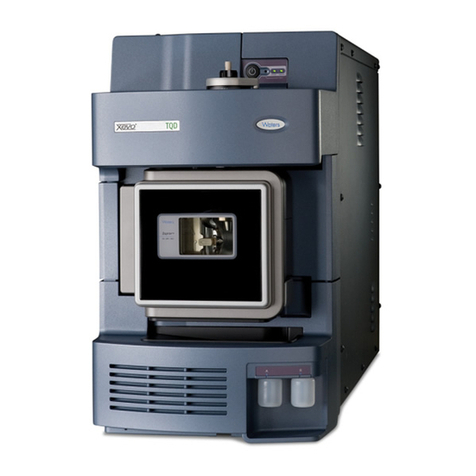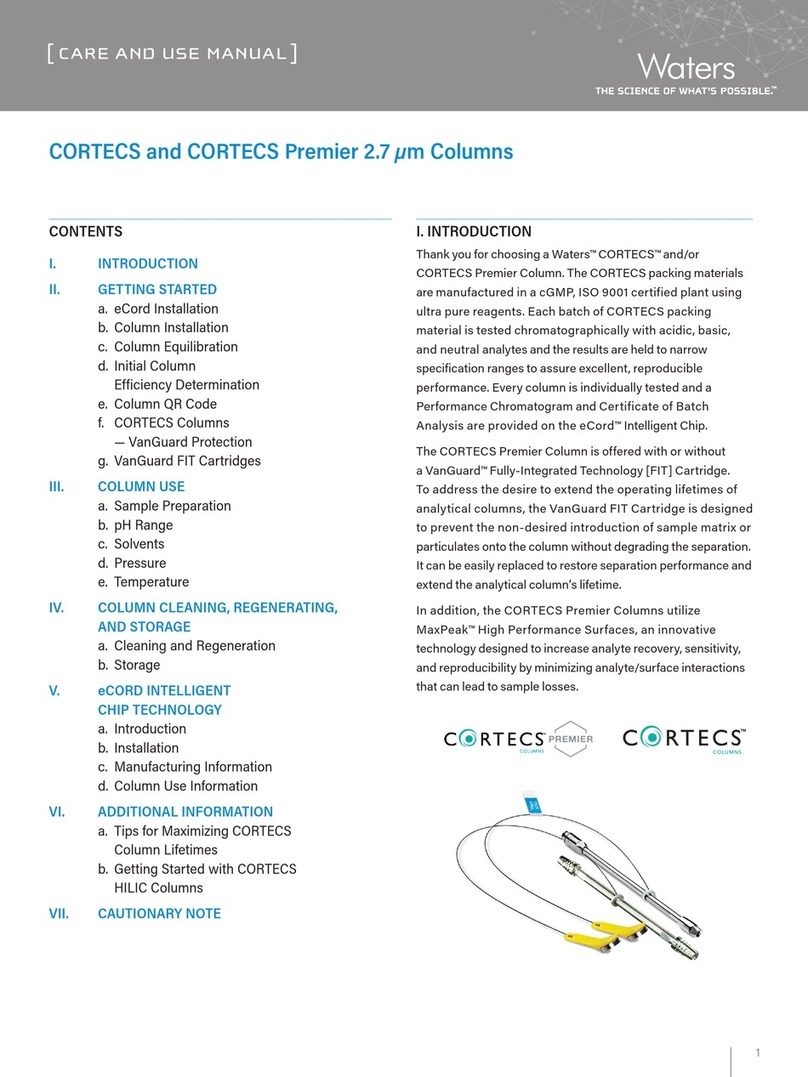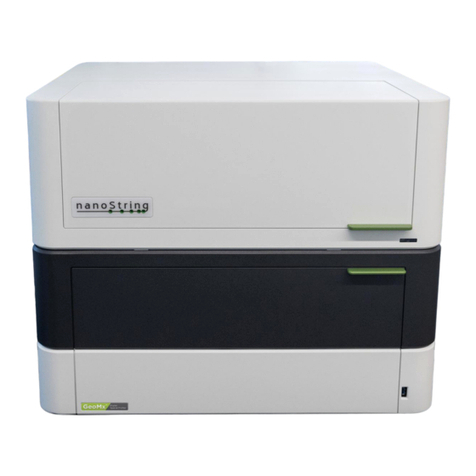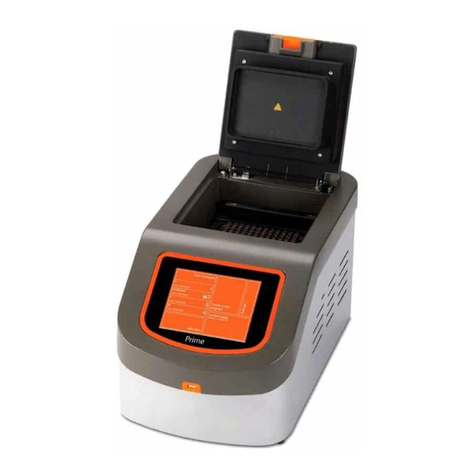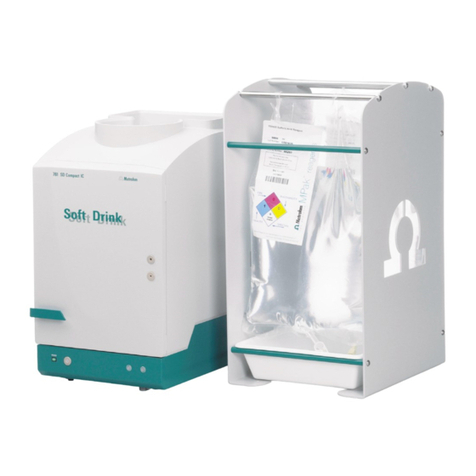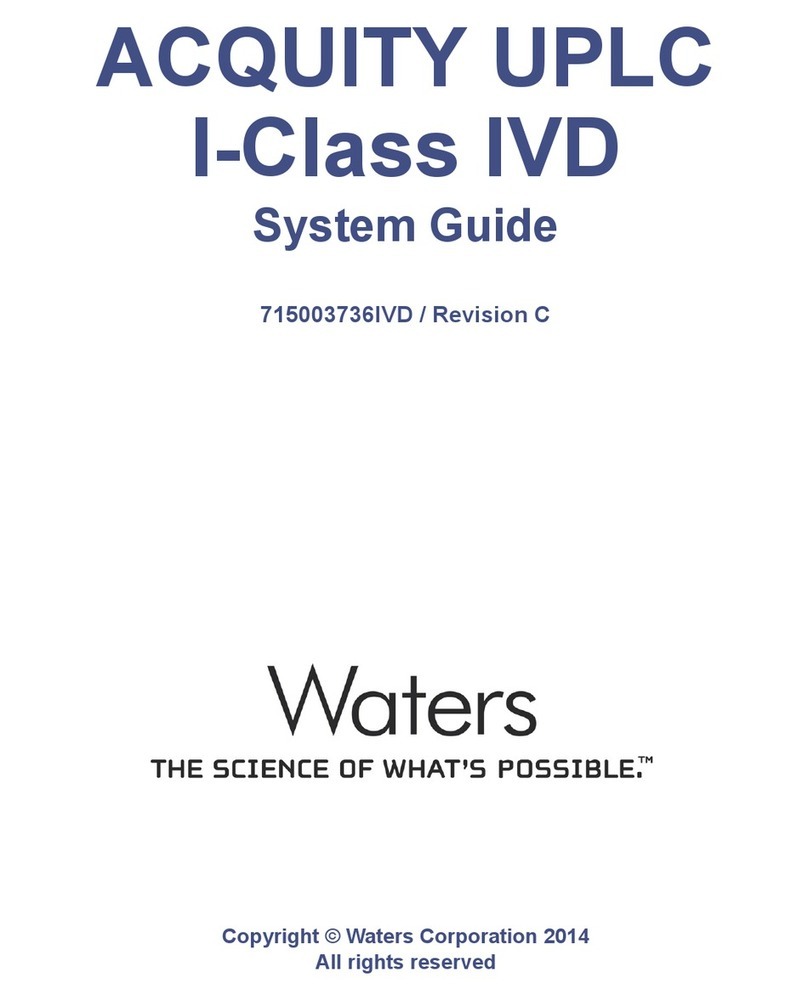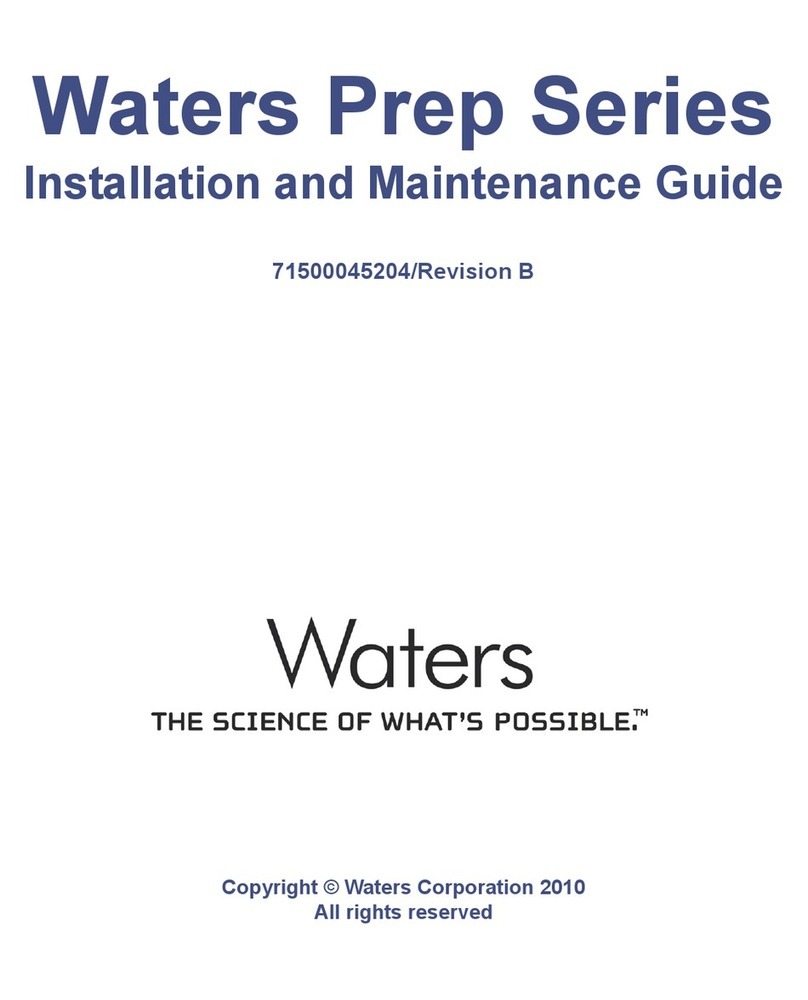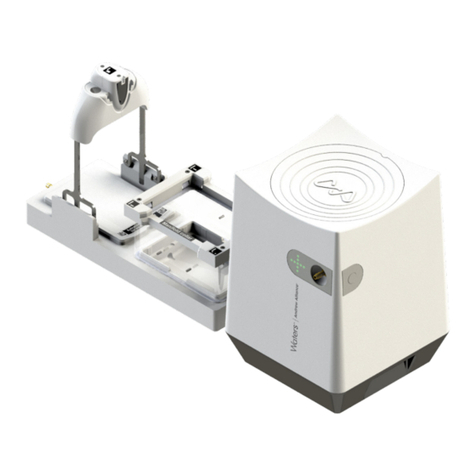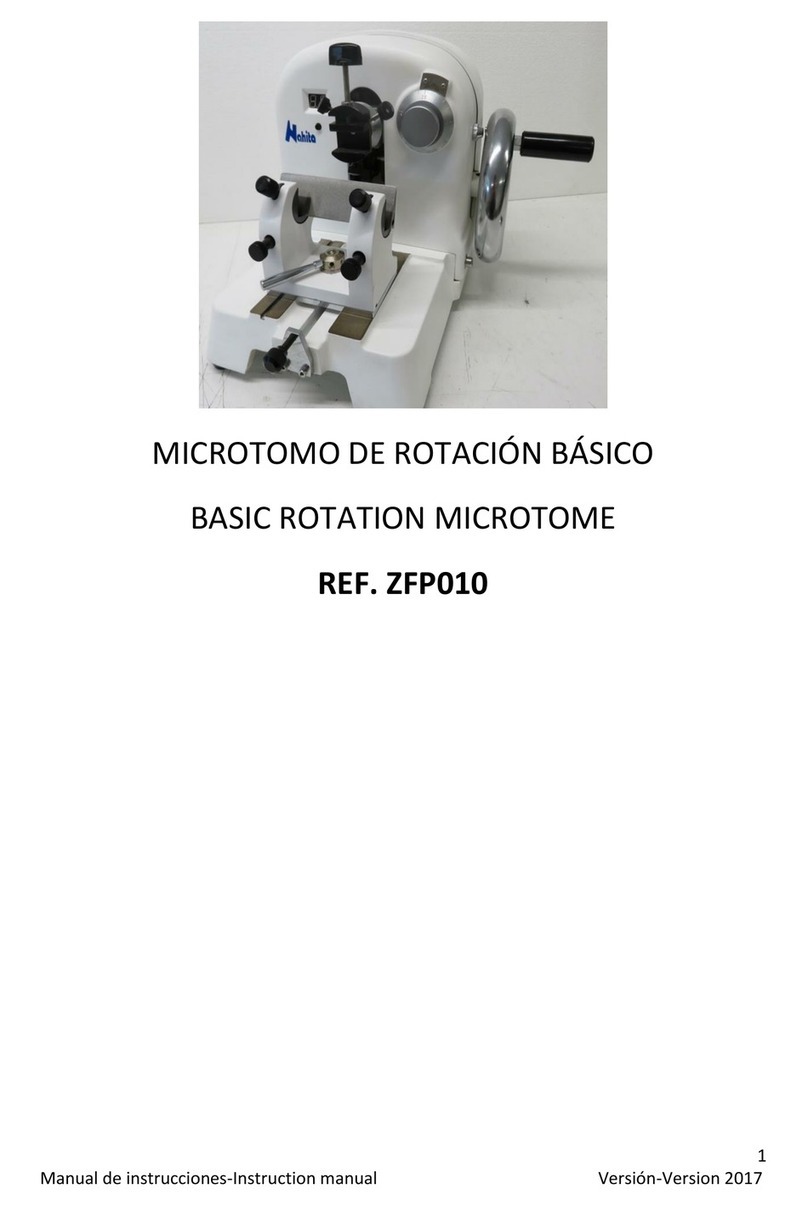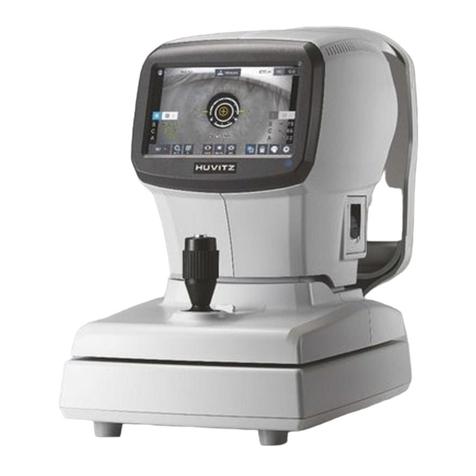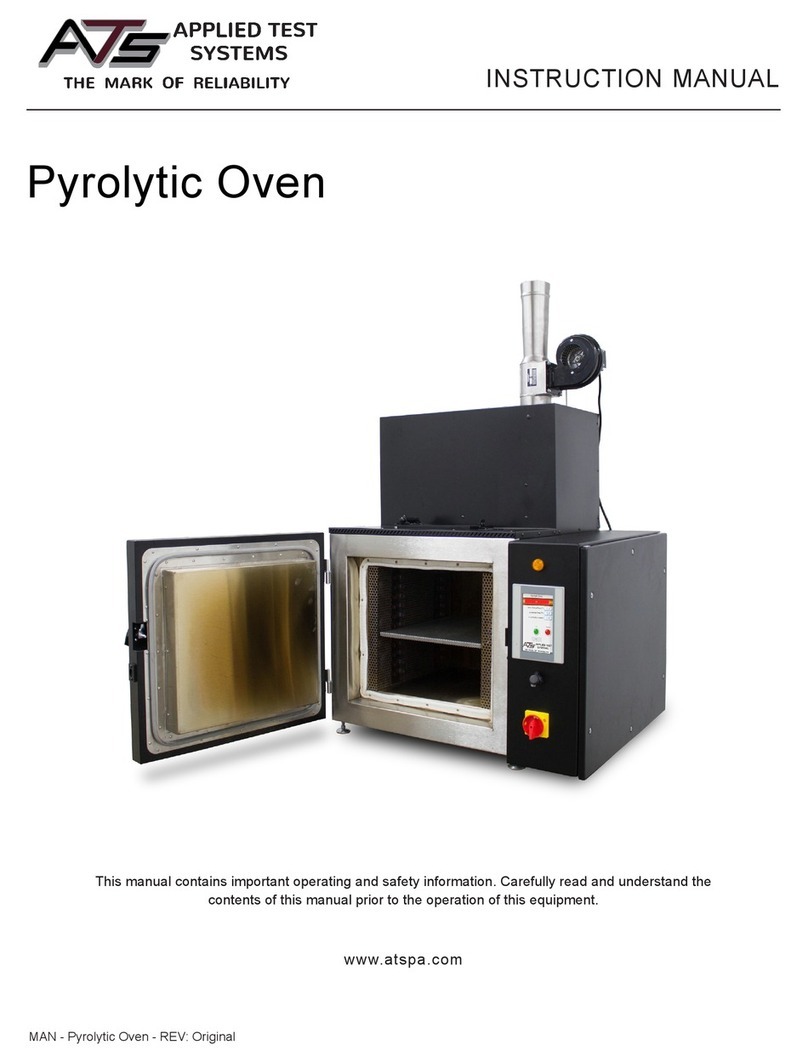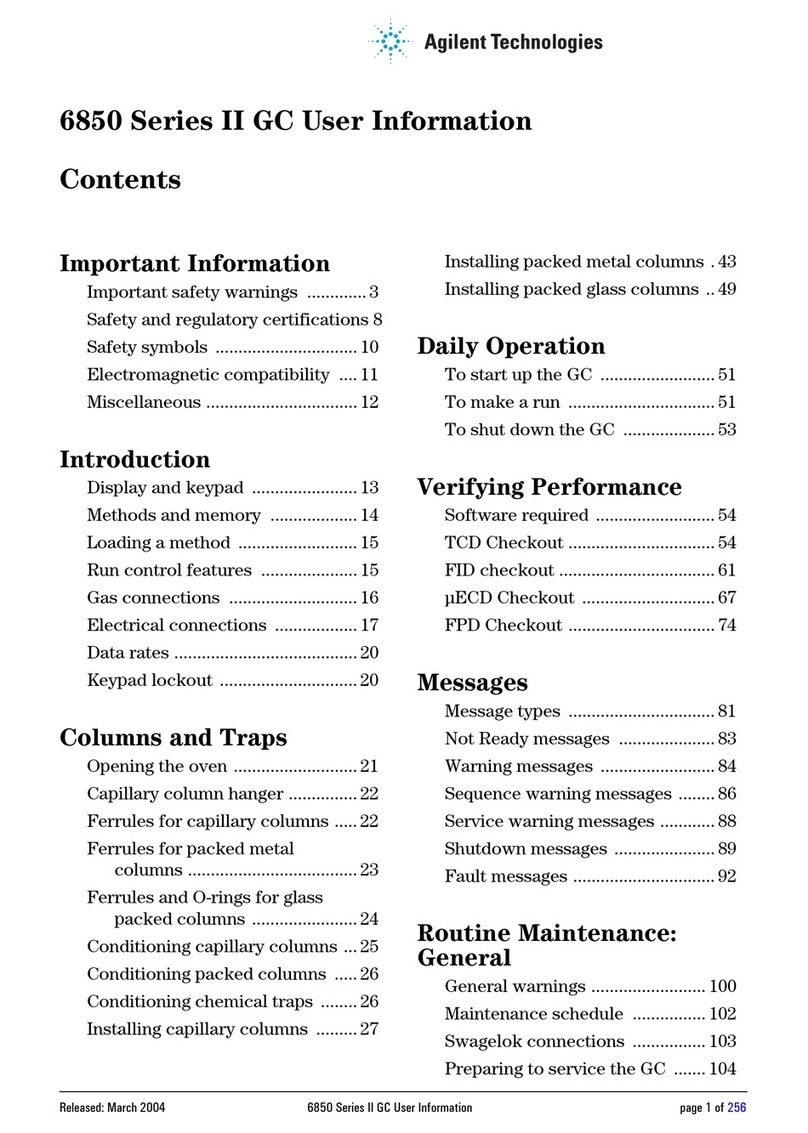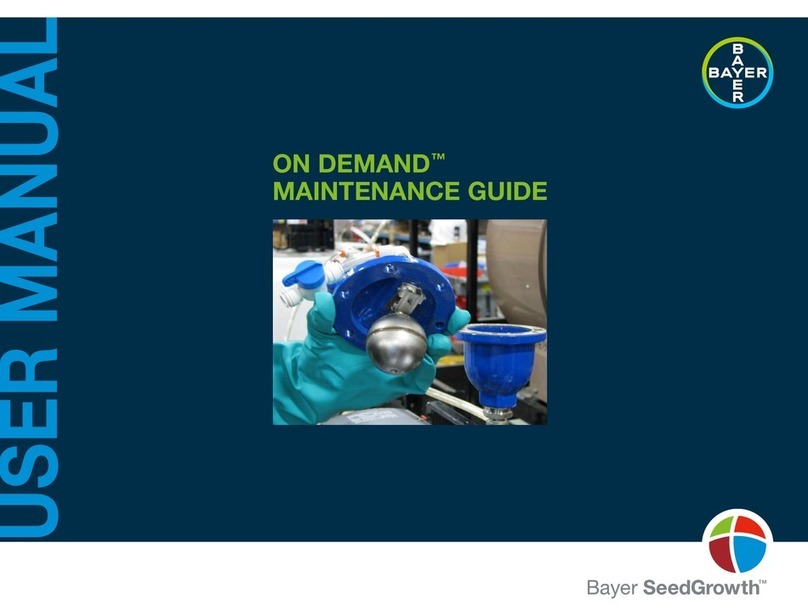
4ACQUITY UPLC Peptide HSS T3 Columns
[ CARE AND USE MANUAL ]
b. pH Range
The recommended operating pH range for ACQUITY UPLC
Peptide HSS T3 Columns is pH 2 to 8. A listing of commonly
used buffers and additives is given in Table 2. Additionally,
the column lifetime will vary depending upon the operating
temperature, and the type and concentration of buffer used.
Note: Working at the extremes of pH, temperature and/or pressure will
result in shorter column lifetimes.
c. Solvents
To maintain maximum column performance, use high quality
chromatography grade solvents. Filter all aqueous buffers prior
to use through a 0.2 µm filter. Solvents containing suspended
particulate materials will generally clog the outside surface of
the inlet distribution frit of the column. This will result in higher
operating pressure and poorer performance.
d. Pressure
ACQUITY UPLC Peptide HSS T3 Columns can tolerate
operating pressures up to 18,000 psi (1241 bar or 124 MPa).
Note: Working at the extremes of pressure, pH and/or temperature will
result in shorter column lifetimes.
e. Temperature
The maximum recommended temperature for ACQUITY UPLC
Peptide HSS T3 Columns is 60 °C. Higher temperatures can
be used, but may result in shorter column lifetimes. When
operating with mobile phases that are close to the lower pH
limit, using temperatures above 60 °C may result in shorter
column lifetimes due to hydrolysis of the bonded phase. High
temperatures should also be avoided when operating close
to the upper pH limit, where the dissolution of silica particles
starts to occur. To maximize column lifetime near the upper
pH limit, temperatures lower than 45 °C are recommended.
The rate of silica dissolution also varies with the type and
concentration of the buffer, with carbonate and phosphate
buffers giving some of the highest rates. As a result, when
using these buffers near the upper pH limit, lower temperatures
and lower concentrations should be considered.
Note: Working at the extremes of temperature, pressure and/or pH will
result in shorter column lifetimes.
III. COLUMN CLEANING, REGENERATING,
AND STORAGE
a. Cleaning and Regeneration
Changes in peak shape, peak splitting, shoulders on the
peak, shifts in retention, change in resolution or increasing
backpressure may indicate contamination of the column.
Flushing with a neat organic solvent, taking care not to
precipitate buffers, is usually sufficient to remove the
contaminant. If the flushing procedure does not solve the
problem, purge the column using the following cleaning
and regeneration procedures.
Use the cleaning routine that matches the properties of the
samples and/or what you believe is contaminating the column
(see Table 3). Flush columns with 20 column volumes of solvent.
Increasing column temperature increases cleaning efficiency.
If the column performance is poor after regenerating and
cleaning, call your local Waters office for additional support.
b. Storage
For periods longer than four days at room temperature, store
reversed-phase ACQUITY UPLC HSS Columns in 100%
acetonitrile. For elevated temperature applications, store
immediately after use in 100% acetonitrile for the best column
lifetime. Do not store columns in buffered eluents. If the mobile
phase contained a buffer salt, flush the column with 10 column
volumes of HPLC grade water (see Table 1 for common column
volumes) and replace with 100% acetonitrile for storage. Failure
to perform this intermediate step could result in precipitation
of the buffer salt in the column when 100% acetonitrile is
introduced. Completely seal column to avoid evaporation
and drying out of the bed.
Note: If a column has been run with a mobile phase that contains formate
(e.g., ammonium formate, formic acid, etc.) and is then flushed with
100% acetonitrile, slightly longer equilibration times may be necessary
when the column is re-installed and run again with a formate-containing
mobile-phase.
Table 3. Reversed-Phase Column Cleaning Sequence
Proteinaceous Samples
1. Water Option 1: Inject repeated 100 µL aliquots of dimethylsulfoxide (DMSO) using a reduced flow rate delivering 50% Eluent A and 50% Eluent B
2. Methanol Option 2: Gradient of 10% to 90% B where: A = 0.1% trifluoroacetic acid (TFA) in water, B = 0.1% trifluoroacetic acid (TFA) in acetonitrile (CH3CN)
3. Isopropanol Option 3: Flush column with 7M guanidine hydrochloride, or 7 M urea
Note: To avoid potentially damaging precipitation within your column (e.g., if your separation eluent contains phosphate buffer), be certain to flush column with
5 to 10 column volumes of water BEFORE using suggested organic eluent column wash procedures.







